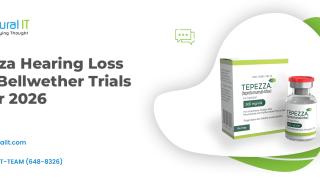Xarelto News
Xarelto News

Introduction
It appears that there are more drugs that cause pain than relieve it. Case in point: Xarelto. Generally known as Rivaroxaban, this drug is as an anticoagulant, a blood thinner that is used to reduce the risk of blood clots and strokes. Lately, however, this "new generation" blood thinner has been linked to an increased risk of hemorrhage, strokes, epidural hematoma, pulmonary embolism, and deep vein thrombosis, among other serious negative side effects.
Lawsuits have been filed against Jannsen Pharmaceuticals, Inc. & Bayer Corp., which allege that the drug's use leads to uncontrollable bleeding as a patient's blood doesn't properly clot, even from minor cuts. Pending lawsuits claim that defendants did not adequately warn patients of Xarelto's side effect.
Xarelto is a prescription medicine used to treat the symptoms of and also to prevent Deep Vein Thrombosis (DVT) before hip or knee replacement surgery, prevention of Venous Thromboembolism (VTE) and restricted mobility, Nonvalvular Atrial Fibrillation, and treatment of DVT and Pulmonary Embolism (PE). Xarelto may be used alone or with other medications.
Xarelto belongs to a class of drugs called anticoagulants, cardiovascular or anticoagulants. It is not known if Xarelto is safe and effective in children.
The most common side effect of Xarelto includes bleeding. Apart from this, the other side effects of these anticoagulants include back pain, muscle weakness in your lower body, loss of bowel control, easy bleeding that does not stop, headache, dizziness, weakness, coughing up blood, and bloody stool.
Xarelto is approved for use in adults to treat deep vein thrombosis (DVT) which is a blood clot that forms in a vein deep inside your body. This thinner is also used to treat pulmonary embolism (PE).
If you are taking Xarelto to prevent blood clots after knee or hip replacement surgery or during a hospital stay and after discharge, the dose is usually taken once a day. If you are taking this drug to prevent strokes and blood clots that may form due to an irregular heartbeat, the dose is usually taken once a day with the evening meal. If you are taking rivaroxaban to treat blood clots, the dose is usually taken twice a day for the first 3 weeks, and then once a day. To lower the risk of blood clots forming again, this medication is usually taken once a day. Do not increase your dose, take it more often, or stop taking it unless you are told to do so by your doctor. The 10 milligrams tablet may be taken with or without food. The 15 milligrams and 20 milligrams tablets should be taken with food. Carefully follow your doctor's directions while taking this medication.
Xarelto users sued Johnson & Johnson, Janssen Pharmaceuticals, and Bayer Corporation, claiming they suffered from internal bleeding, wound leakage, and infections after taking the popular anti-clotting drug. The drug’s makers won six trials but agreed to settle thousands of lawsuits for $775 million in March 2019.
Thousands of patients who say they’ve been seriously injured by Xarelto (rivaroxaban) filed lawsuits against drug companies for compensation. Others alleged their loved ones suffered fatal injuries as a consequence of taking the anti-clotting drug.
In all, more than 25,000 federal lawsuits have alleged the companies are getting rich off the blockbuster drug while putting Americans at risk. Lawsuits also claim the drug caused surgical wounds to develop leaks, infections, and other problems.
Lawsuits accuse Xarelto makers Janssen Pharmaceuticals Inc. (parent company Johnson & Johnson) and Bayer Health Care Pharmaceuticals Inc. (Bayer Corporation) of failing to adequately research Xarelto and then downplaying the serious risks for patients.
According to attorney Ellen Relkin, Xarelto has a narrow therapeutic index, meaning there is too small a window between a safe dose and a dangerous one. This makes it easy for a person to get too much or too little Xarelto.
Dr. Jason Tarpley, a stroke neurologist, and director of the Stroke and Neurovascular Center at Providence Saint John’s Health Center in Santa Monica, California stated to Healthline that patients shouldn’t stop taking Xarelto if they’re currently on it, as the sudden discontinuation of anticoagulants could result in a stroke.
Instead of stopping the medication, Dr. Tarpley recommends patients understand the bleeding risks of Xarelto and speak with their doctors about this.
Dr. Tarpley further stated that “Ultimately, patients need to decide with their doctor if the bleeding risk of anticoagulants like Xarelto is worth accepting, to prevent strokes associated with atrial fibrillation or other clotting problems".
According to the Institute for Safe Medicine Practices (ISMP), a watchdog group, anticoagulant drugs are a “high-risk treatment” and cause bleeding in approximately 15% of patients with atrial fibrillation. Many physicians are wary of the newer anticoagulants since there is limited data on how to manage bleeding in patients taking them.
The pharmaceutical companies that produced Xarelto are now under fire for not only causing side effects in individuals but for failing to provide adequate warnings of the risks.
The independent research showed that as compared to standard of care, preventing secondary stroke with the use of aspirin or similar over-the-counter medication, Xarelto faired the same in terms of efficacy.
While there is no indication that Xarelto offers any greater benefit to patients than more standard forms of care, the drug seems to pose substantial health risks to users. Internal bleeding, a Xarelto side effect that J&J failed to warn consumers of, is one of these risks. According to the FDA, the blood thinner medication has been linked to more than 370 deaths related to internal bleeding.
The FDA first approved Xarelto in July 2011, to reduce the risk of blood clots, deep vein thrombosis (DVT), and pulmonary embolism following knee and hip surgery. In November 2011, it was approved as an anti-coagulant for individuals with non-valvular atrial fibrillation. In November 2012, approval was expanded to include patients with DVT and pulmonary embolism, as well as a long-term treatment to prevent a recurrence.
Unlike warfarin, which has been the go-to anticoagulant treatment for decades, there was no approved reversal agent for Xarelto at the time it was introduced. As a result, doctors were left unable to control bleeding problems on Xarelto.
Since it was introduced, hundreds of adverse event reports have been submitted suggesting a link between Xarelto and bleeding injuries or death. According to allegations raised in lawsuits, the drug makers failed to adequately warn about the bleeding risk or lack of an effective Xarelto reversal agent.
The FDA first approved Xarelto in July 2011, to reduce the risk of blood clots, deep vein thrombosis (DVT), and pulmonary embolism following knee and hip surgery. In November 2011, it was approved as an anti-coagulant for individuals with non-valvular atrial fibrillation. In November 2012, approval was expanded to include patients with DVT and pulmonary embolism, as well as a long-term treatment to prevent a recurrence.
Unlike warfarin, which has been the go-to anticoagulant treatment for decades, there was no approved reversal agent for Xarelto at the time it was introduced. As a result, doctors were left unable to control bleeding problems on Xarelto.
Since it was introduced, hundreds of adverse event reports have been submitted suggesting a link between Xarelto and bleeding injuries or death. According to allegations raised in lawsuits, the drug makers failed to adequately warn about the bleeding risk or lack of an effective Xarelto reversal agent.
In September 2013, the German newspaper Der Speigel reported that there had been nearly 1,000 adverse events involving Xarelto during the first eight months of 2013 alone, including 72 deaths.
In May 2014, the Institute for Safe Medication Practices (ISMP) reported that doctors and patients were reporting adverse events linked to the use of Xarelto in increasing numbers. ISMP reported in QuarterWatch that there were 680 Xarelto adverse events reported in the U.S. in 2013.
The number of reports linked to Xarelto surpassed those linked to Pradaxa, which had once held the dubious distinction of being the drug with the most adverse event reports.
Furthermore, some evidence suggests that blood monitoring, which the manufacturers said was not needed, could reduce the risk of Xarelto bleeding injuries.
A study published in October 2014 published in the Journal of Cardiology found that monitoring levels of Xarelto in the blood of patients with atrial fibrillation helped doctors determine when the drug was at peak levels and how to better control it and prevent bleeding events, similar to warfarin.




